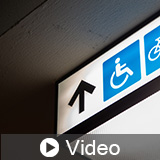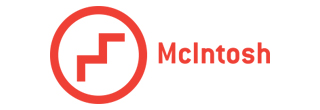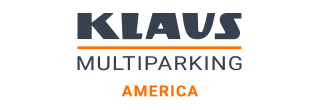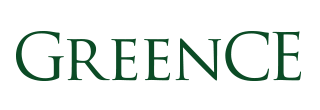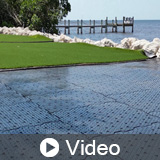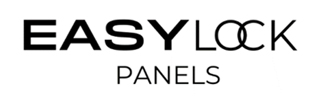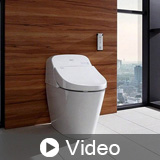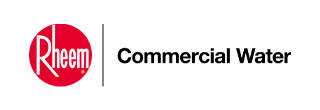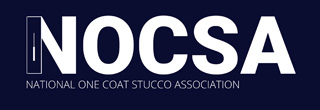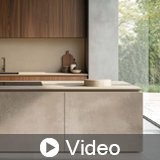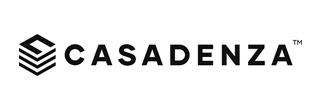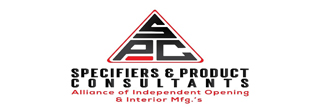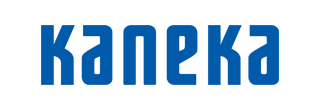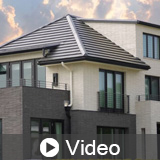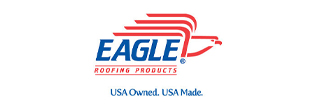This course provides architects and engineers with a comprehensive overview of the critical requirements of the Americans with Disabilities Act (ADA) as they apply in 2023 and beyond. Participants will gain practical guidance on designing accessible spaces, ensuring code compliance, and avoiding common pitfalls in architectural and engineering projects. Emphasis is placed on real-world applications, case studies, and actionable strategies for integrating accessibility seamlessly into the design process.

LEED General Courses
Need continuing education to maintain your LEED credential? Do you want to learn more about LEED certification? All courses offer AIA CE and GBCI credit hours applied towards your architect license requirements. All courses listed provide AIA HSW and GBCI general CE hours. Once you have completed the AIA online courses and GBCI CE courses, we will report your earned course credits automatically. AIA Continuing Ed and courses about LEED certification are available online anytime, 24/7/365! GreenCE is a USGBC Education Partner and offers free courses about LEED certification.
$35.00 |
|
“Draw Today for Tomorrow” is more than a phrase—it embodies a forward-thinking mindset and serves as a call to action for architects, planners, and engineers to shape adaptable, sustainable environments by designing better spaces where people live, work, and thrive. As urban density increases and land availability decreases, architects, engineers, and developers are being challenged to rethink traditional approaches to parking.
FREE |
|
This comprehensive course equips design professionals with essential knowledge about per- and polyfluoroalkyl substances (PFAS), commonly known as forever chemicals, and their pervasive presence in building materials. You'll discover how these persistent chemicals impact human health and the environment while learning practical strategies to identify and avoid PFAS-containing products in your projects.
$45.00 |
|
This course provides an overview of how innovative base panel systems can significantly enhance the performance, consistency, and sustainability of artificial turf installations. Over the past four decades, artificial turf has expanded into a wide range of applications, including landscapes, rooftops, playgrounds, pet areas, putting greens, and sports fields. While advances in turf fiber aesthetics and feel have progressed steadily, the underlying base system has remained largely unchanged.
FREE |
|
Welcome to an exciting journey through the revolutionary world of bio-based circular materials that are reshaping how we design and build. This course explores innovative construction materials derived from agricultural waste, fungi, and renewable plant sources that offer design professionals unprecedented opportunities to create environmentally responsible buildings.
$45.00 |
|
In this one hour video presentation, we explore how sustainable manufacturing helps reduce environmental impacts and solve critical issues facing our planet. Our team discusses how a manufacturer can use innovative practices to reduce energy and water consumption and material waste. Industry experts describe why design professionals should use EPDs, HPDs, and Declare Labels for specifying products. Finally, we examine how global megatrends affect design strategies and the built environment.
FREE |
|
A variety of commercial and industrial applications, from warehouses to schools, rely on Emergency Eyewash & Shower Equipment to protect occupants from chemicals, irritants, and other biohazards with which they might come in contact in their workplace. Join us in this one-hour course as we discuss ANSI Z358.1 compliance, focusing on the role tepid water plays in safety system design and specifications.
FREE |
|
AWARDS GBCI CREDIT. NO AIA CREDIT. In this one-hour course, we will trace the evolution of stucco to more fully understand how the product has influenced both the exterior and interior construction of walls in today’s modern structures. We will also compare and contrast one coat stucco to three coat stucco to see the value that the one coat stucco system offers. Best practices for product mixing and application of stucco from substrate to finish will be presented to reveal cost-effectiveness, energy-efficiency, durability, sustainability, and design versatility features.
FREE |
|
AWARDS GBCI CREDIT. NO AIA CREDIT. This course explores the critical but often overlooked relationship between water and energy consumption in the built environment, highlighting the environmental and economic impacts of inefficiencies in traditional hot water delivery systems. Attendees will gain foundational knowledge of hot water recirculation technologies, including key distinctions between traditional and on-demand systems, design considerations for new and retrofit projects, and performance optimization through smart technologies.
FREE |
|
In this one-hour course, we will explore the challenges of creating a sustainable cannabis facility that reduces energy consumption, water usage, and waste. We identify best practices for sustainable cannabis facilities and how hazards may affect building occupants.
$42.00 |
|
Mass timber is revolutionizing modern architecture, offering design professionals an unprecedented opportunity to create buildings that actively fight climate change while delivering superior occupant experiences. This cutting-edge construction method is transforming skylines from Portland to Stockholm, enabling architects to build taller, faster, and more sustainably than ever before.
$45.00 |
|
Thin stone veneers are revolutionizing architectural design by offering lightweight, flexible, and sustainable alternatives to traditional stone applications. We will take an in-depth look at ultra-thin stone veneer technology, its composition, manufacturing process, performance benefits, and broad range of applications. Design professionals will gain insight into specifying these unconventional materials for commercial and residential projects, ensuring compliance with fire ratings, sustainability considerations, and best practices for installation.
FREE |
|
We're facing an unprecedented crisis of connection in our communities. While we've become more digitally linked than ever before, genuine human connection is becoming increasingly rare. As a design professional, you hold extraordinary power to address this crisis through the spaces you create. Your buildings don't just house activities; they shape the social patterns that determine whether communities thrive or struggle.
$35.00 |
|
The year is 1414. Europe teeters on the brink of collapse—cities drowning in their own filth, forests stripped bare, ancient wisdom crumbling into superstition. In a forgotten Swiss monastery, a Vatican spy named Poggio Bracciolini makes a discovery that will shake the foundations of civilization. Hidden beneath centuries of dust lies the ultimate treasure: a manual for architectural mastery, written by written by Marcus Vitruvius Pollio, a Roman engineer whose principles would change the world. But this is no ordinary manuscript.
$35.00 |
|
Welcome to Earth's most terrifying reality show - and you're already starring in it. Right now, as you read this, ancient permafrost is melting and releasing methane bombs that have been sleeping for millennia. Ice sheets the size of countries are collapsing into the ocean. Entire species are vanishing before we even discover them. We've pushed the planet past multiple tipping points, and the Earth system is now hunting us back with unprecedented heat waves, super storms, and ecological collapse. This isn't science fiction - this is your life.
$35.00 |
|
What if the smallest intervention could transform an entire neighborhood? What if the spaces we design carry hidden psychological and cultural messages that either empower or exclude? This course takes you beyond traditional sustainability metrics to explore five theories that are reshaping how we think about responsible design. This course exposes uncomfortable truths—how seemingly innocent design choices may perpetuate inequality, exclude entire communities, and maintain systems of oppression that most design professionals may not recognize.
$35.00 |
|
Welcome to an exploration of how space becomes a living, breathing performer in the grand theater of human experience. Spatial dramaturgy represents the fascinating intersection where architecture transcends mere shelter to become narrative, where interior design moves beyond aesthetics to choreograph human emotion and behavior. In this journey, we'll discover how the greatest architects and designers have wielded space as a storytelling medium, creating environments that don't just house activities but actively participate in shaping human experience.
$35.00 |
|
The adoption of smart access control systems is transforming multi-family, multi-tenant, and commercial properties driving significant growth in the smart lock industry worldwide. This course explores how smart locks go beyond traditional mechanical functions to offer seamless, technology-driven security and access solutions. Attendees will gain insight into the latest advancements, key features, and industry trends shaping smart lock technology.
FREE |
|
This one-hour course focuses on the applications of sealant products formulated with Silyl-Terminated Polyether (SMP), also known as Silane Modified Polymer (MS Polymer). We will explore applications for highly durable, multipurpose and primerless sealants and the advantages over traditional acrylics, silicones, polyurethanes and rubber/synthetics. In addition to sealing joints, gaps and penetrations, we will discover repair of household materials and adhesion to difficult substrate materials.
FREE |
|
In this one hour course, we will take an in-depth look at the sustainability and energy efficient attributes of concrete tile roofing, including the near zero-waste manufacturing process, life cycle cost and performance versus temporary asphalt shingle roofing as well as the installation processes which enhances the inherent thermal mass attributes of concrete tile roofing.
FREE |
Pages
GreenCE offers AIA HSW online continuing education, LEED online courses, ADA online courses, and LEED Exam Prep. GreenCE helps design professionals obtain their AIA HSW hours, LEED-specific hours, barrier-free hours, and IDCEC CE hours. The website delivers LEED Exam Prep for the LEED Green Associate exam, LEED BD+C exam, and LEED O+M exam. The online LEED certification courses educate architects, engineers, interior designers, contractors, and students.
GreenCE is a USGBC Education Partner that offers the only free LEED exam prep in the country. The LEED certification course includes a free LEED exam study guide, free LEED practice questions, and LEED certification tips and strategies. In addition, GreenCE offers free courses for LEED APs to obtain their LEED BD+C hours, LEED ID+C hours, and LEED O+M hours. Most GBCI courses are free and in video format.
GreenCE is an AIA Education Provider and offers free AIA online courses. The free AIA courses are sponsored by building product manufacturers. In addition, the platform offers barrier-free ADA courses for Texas and California architects. Texas barrier-free online courses and California Accessibility courses meet state requirements. TX ADA courses and CA ADA courses are created by the top ADA experts in the country.
Building product manufacturers can get specified by using GreenCE services. GreenCE develops AIA and LEED courses for product manufacturers to educate architects. The online architect courses help build brand awareness about building products. In addition, GreenCE hosts manufacturer webinars for 200-300 architects at a time. The AIA webinars and LEED webinars are free for architects who can learn about various products.
Finally, GreenCE helps manufacturers develop Health Product Declarations (HPDs), LEED v4 product documentation, mindful MATERIALS documentation, Google Portico documentation, and Declare Labels. We value our relationships with design professionals and building product manufacturers. They are crucial to our success.

